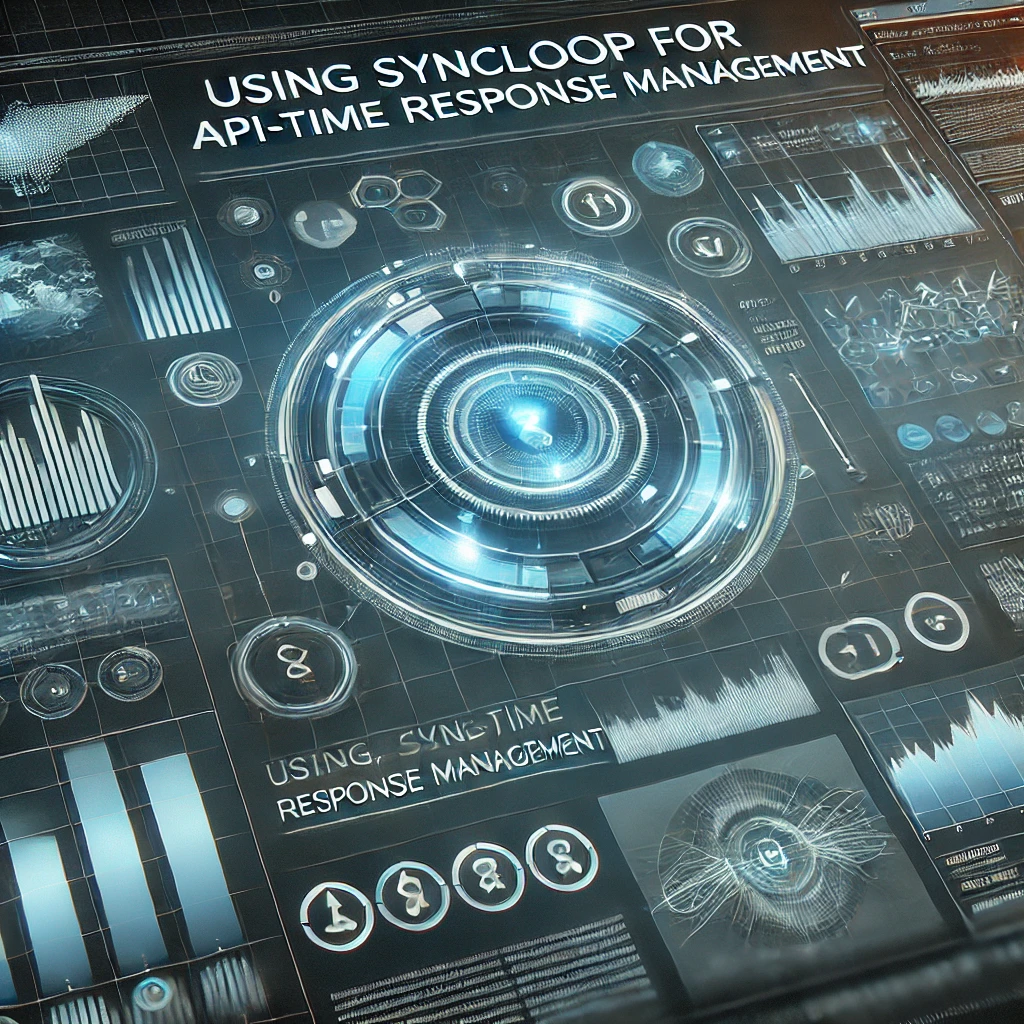Using Syncloop for Real-Time API Response Management

The Need for Real-Time API Response Management
APIs form the backbone of modern software ecosystems, connecting applications, systems, and users. Efficient real-time response management ensures:
- Faster User Interactions: Minimizing latency enhances the user experience.
- Improved Reliability: Handling errors and retries dynamically maintains system stability.
- Enhanced Data Accuracy: Real-time processing ensures up-to-date information across systems.
- Scalable Workflows: Dynamic handling of high-volume requests ensures applications remain responsive under heavy loads.
Syncloop’s capabilities address all these needs, enabling developers to build and maintain efficient, scalable systems.
Features of Syncloop for Real-Time Response Management
1. Dynamic Workflow Controls
Syncloop’s Await, Redo, and Ifelse controls allow you to manage the flow of responses dynamically. These tools are ideal for conditional execution, retry mechanisms, and delayed processing based on system requirements.
2. Transformer Capabilities
Transformers enable data manipulation in real time, such as reformatting payloads, converting units, or extracting necessary fields. This ensures downstream systems receive data in the exact format they require.
3. Real-Time Monitoring and Debugging
Syncloop provides a comprehensive dashboard for tracking API performance. Logs and metrics allow you to monitor response times, detect bottlenecks, and fine-tune workflows.
4. Built-In Error Handling
With retry mechanisms and error-handling rules, Syncloop helps manage unexpected issues without compromising user experience. Developers can configure fallback workflows to ensure graceful degradation in case of failures.
5. Scalable API Gateways
Syncloop supports high-volume traffic with scalable API gateways, ensuring consistent performance even during peak loads. These gateways provide caching options to further reduce latency.
Real-World Applications
1. Customer-Facing Applications
For e-commerce and fintech applications, real-time response management ensures smooth user experiences. For instance, Syncloop can handle payment gateway responses dynamically, retry failed transactions, and trigger confirmation notifications immediately.
2. IoT Systems
In IoT ecosystems, real-time API responses are essential for device synchronization and status updates. Syncloop’s capabilities ensure reliable communication between devices and management platforms.
3. CRM and Support Systems
Customer relationship management systems rely on real-time updates to provide accurate insights. Syncloop facilitates seamless data flow between APIs, ensuring support teams always have the latest information.
4. Supply Chain Management
For logistics and supply chain operations, real-time responses are critical for tracking shipments and inventory. Syncloop’s error-handling and data transformation capabilities streamline these workflows.
Implementing Real-Time API Response Management with Syncloop
Step 1: Configuring API Endpoints
Use Syncloop’s intuitive interface to configure API endpoints. Ensure endpoints are optimized for high availability and secure data exchange.
Step 2: Designing Workflows
Leverage Syncloop’s workflow controls to design processes for handling responses dynamically. For example, use Ifelse controls to branch workflows based on response status codes.
Step 3: Adding Data Transformers
Transformers simplify the task of data formatting. For example, convert a JSON response to XML format for compatibility with legacy systems.
Step 4: Monitoring and Optimization
Utilize Syncloop’s monitoring tools to track response performance. Identify slow endpoints or workflows and optimize them for better efficiency.
Step 5: Scaling for High Demand
Configure API gateways to handle spikes in traffic, ensuring consistent response times even during periods of heavy use.
Best Practices for Using Syncloop in Real-Time Response Management
- Optimize Latency: Use caching mechanisms and minimize unnecessary processing to reduce latency.
- Secure Data Flows: Implement token-based authentication and encrypted communication for secure API exchanges.
- Design for Scalability: Build workflows that can handle varying traffic loads gracefully.
- Monitor Continuously: Regularly review performance metrics and adjust workflows as needed.
- Leverage Automation: Automate repetitive tasks like error retries and data transformations to save time and reduce human error.
Why Choose Syncloop?
Syncloop’s comprehensive features make it an ideal platform for real-time API response management. From robust error handling to dynamic workflows, the platform simplifies the complexities of managing API interactions. Whether you’re handling thousands of daily requests or scaling for millions, Syncloop equips you with the tools needed to maintain reliability and performance.
Conclusion
Real-time API response management is no longer a luxury—it’s a necessity for modern applications. Syncloop offers a powerful, user-friendly platform to tackle these challenges head-on, enabling developers to build resilient, efficient systems. By harnessing Syncloop’s capabilities, you can ensure your applications deliver seamless, responsive experiences to users.
Back to Blogs